Creating an edible flower garden is delightful, blending blossoming plants’ beauty with homegrown food’s practicality. As you plan your garden, you’re likely considering a variety of blooms, each with unique colors, flavors, and culinary uses; for example, is hibiscus flower edible? And while the vibrant hibiscus flower may have caught your eye, you may now wonder whether this stunning bloom could be a tasty and safe addition to your edible garden. Fortunately, you’ve come to the right place.
The hibiscus flower is not just beautiful; it’s edible, too. These vibrant flowers add flavor and color to salads, soups, teas, cocktails, and jams, among many other dishes. Besides their culinary appeal, they may offer various health benefits and promote skin health due to their antioxidant properties.

Imagine making your garden into a culinary paradise. Hibiscus is more than just mainly grown for its ornamental properties. It’s also edible and full of flavor. You can add these unique flowers to your dishes for an extra splash of color and taste. In this article, you’ll learn how to incorporate hibiscus flowers in your cooking, from salads and soups to teas and cocktails. These edible flowers make dishes more enjoyable with their unique flavor and are packed with health benefits that enhance any homemade meal.
Humble Highlights
- Discover the different edible varieties of hibiscus plants to add these fruity and flavorful blooms and petals to plenty of dishes!
- Save time by discovering which parts of hibiscus plants are edible so you can confidently harvest this versatile flower.
- Explore the various culinary uses and benefits of eating hibiscus flowers PLUS a delicious step-by-step guide to making candied hibiscus flowers!
Are All Hibiscus Edible
Hibiscus plants, often valued for their beauty, aren’t just pretty but edible. Many parts of the hibiscus plant can be eaten, including the flowers, leaves, and fruit (also known as calyces).
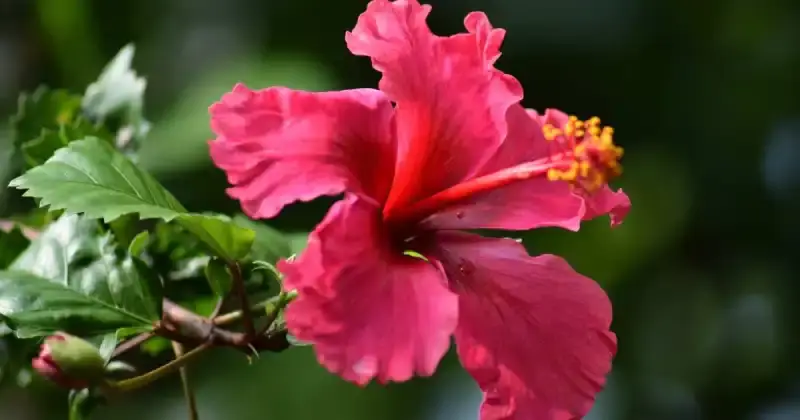
Hibiscus is a genus of flowering plants in the mallow family, Malvaceae. There are so many species of hibiscus. In fact, there are 17 indigenous native Hibiscus species in North America alone, with most being edible. Yet, among this diverse selection, some specific types of hibiscus stand out as particularly popular and widely utilized in cooking. 1
Which Types of Hibiscus Are Edible
A few of the various hibiscus species have become especially well-known and widely used in cooking. These favored types are often used for their unique flavors, nutritional properties, or culinary applications. Some varieties include:
- Cranberry Hibiscus
- Edible Leaf Hibiscus
- Jamaican Sorrel
- Tropic Hibiscus
- Rose Of Sharon
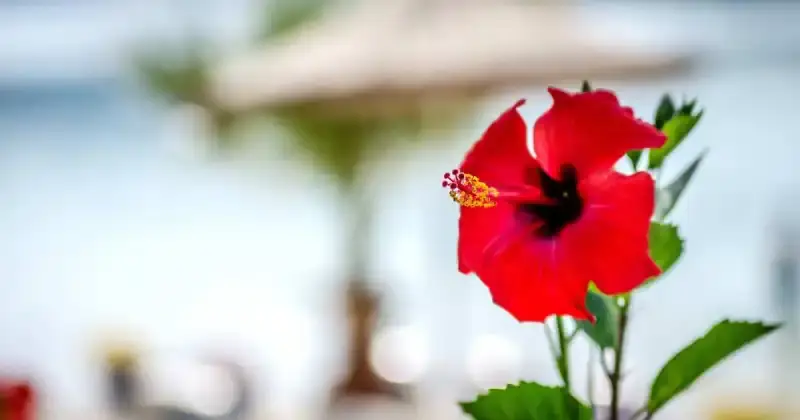
Cranberry Hibiscus (Hibiscus Acetosella)
One of the most common varieties of hibiscus used in cooking is Cranberry hibiscus, also known as false roselle. Its leaves and flowers are edible and can be used in salads or tea-making. Interestingly, the calyx of this variety, though small, is not edible. The calyces are the protective coverings surrounding the developing seeds of the hibiscus flowers. Once the flowers bloom and the petals fall away, the calyces remain. 2
The cranberry hibiscus is unique in that it only blooms during the fall, adding brightness to the garden during that season. The false Roselle can be propagated through cuttings or saving the seeds.
Edible Leaf Hibiscus (Abelmoschus Manihot)
This plant is native to Asia and famous in the Pacific Islands, where it is known by various local names, such as South Seas salad, with diverse culinary uses. The edible leaf hibiscus is praised for its exceptional heat tolerance and lack of bitterness, even in hot and humid conditions. It is a highly nutritious green, boasting twice as much protein as cooked spinach. Additionally, it is rich in trace minerals like iron, nickel, copper, and manganese, making it a valuable addition to any diet.
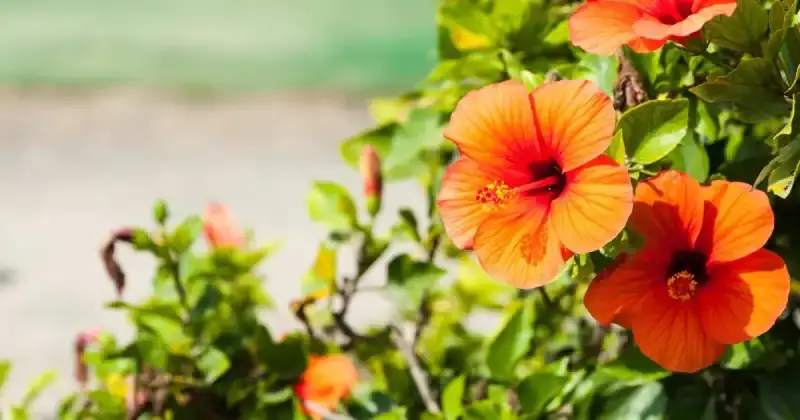
Jamaican Sorrel (Hibiscus Sabdariffa)
Jamaican sorrel, also known as roselle or Florida cranberry, is originally from Africa and is now grown in various regions from Egypt to Ethiopia, including Somalia. It arrived in the Caribbean through slave ships and thrived in Jamaica, where it earned the name Jamaican sorrel.
Sorrel, whether Jamaican or not, refers to the plant’s fleshy and thick flower petals. In the Caribbean, these flowers bloom around New Year’s and are used fresh or dried. The red petals can be incorporated within specialty teas or cold beverages, including the famous Red Zinger tea by Celestial Seasonings.
Jamaica produces the best sorrel, and it is extensively cultivated there. In Latin America, the dried hibiscus petals are known simply as “Jamaica” and can be found in the spice section of Latin markets.
The hibiscus sabdariffa flower petals have a unique taste—fleshy, tender, and reminiscent of a floral sweet tart. They have a sour, tangy flavor, causing the mouth to pucker and water simultaneously. Some say it has a flavor similar to cranberry without bitterness.
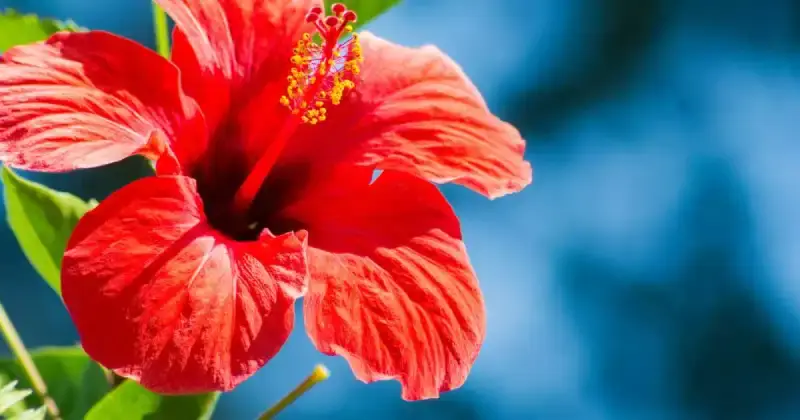
Tropical Hibiscus (Hibiscus Rosa-Sinensis)
These sun-loving tropical hibiscus plants are renowned for their bold plate-shaped flowers, displaying vibrant colors such as red, pink, yellow, orange, purple, lavender, blue, white, and bicolor varieties. Some even feature attractive variegated foliage.
While its exact origin remains uncertain, tropical hibiscus has been cultivated in China, Japan, and the Pacific Islands for a long time. Tropical hibiscus thrives with six to eight hours of direct sunlight daily and prefers well-watered conditions, especially in container gardens during the hottest part of the season. 3
These elegant blooms are not only beautiful, but the flowers are also edible, used in salads in the Pacific Islands and cooked in China like spinach, and have a tangy flavor. Furthermore, the flower has diverse uses, including hair care preparations and shoe shining in certain parts of India. It is also regarded as having medicinal properties in Chinese herbalism.
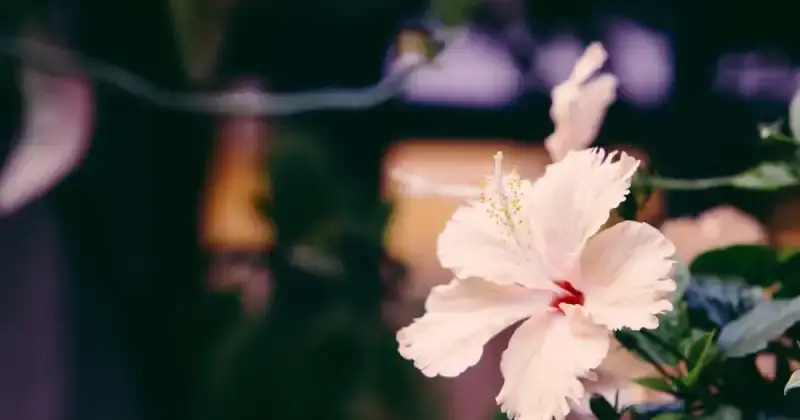
Rose of Sharon (Hibiscus Syriacus)
Hibiscus syriacus, also known as the Syrian hibiscus, rose of Sharon, rose mallow, or Korean hibiscus, is South Korea’s national flower. Despite its name, it doesn’t originate from Syria but comes from China and has been cultivated in Korea for thousands of years. The plant is winter-hardy and can survive temperatures down to -20 degrees Fahrenheit (-29 degrees Celsius) and has been popular throughout Europe and Asia for centuries.
The plant’s fruit, when eaten at the right stage of ripeness, tastes like boiled corn. The seeds have a more pungent taste than the beautiful flowers and resemble kernels of corn.
What Part of Hibiscus Is Edible
Hibiscus plants offer several edible parts, each with unique culinary uses, including:
- Flowers
- Calyx
- Leaves
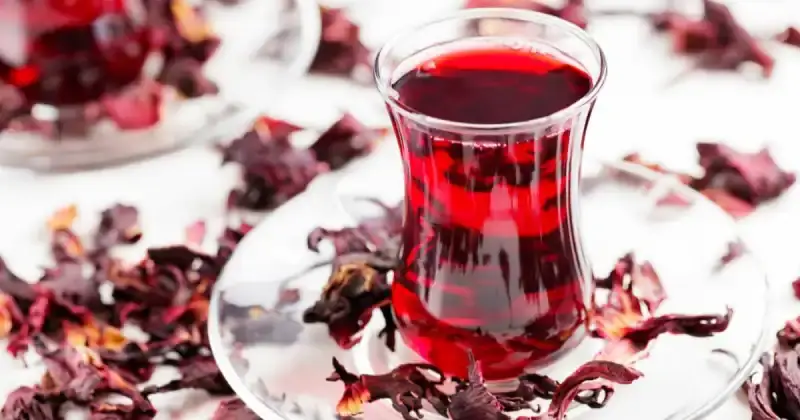
Let’s take a closer look at these edible plants in greater detail.
Flowers
Hibiscus flowers are edible and versatile and not just grown for ornamental purposes. Flowers can be used to make hibiscus tea, a popular beverage known for its vibrant color and tart flavor. Moreover, these gorgeous blooms can infuse syrups, flavor desserts, or act as a garnish in salads. Different varieties of hibiscus may offer varying colors and taste profiles, allowing for creative culinary exploration.
Calyx
These bulb-like structures are also edible. Fresh or dried calyxes are traditionally used to make hibiscus-infused teas and beverages. When steeped in hot water, the hibiscus calyces release their distinct flavor and color, creating a refreshing and tangy drink. 4
Leaves
Some hibiscus plant varieties have edible leaves that can be incorporated into culinary preparations. The leaves are tender and have a mild flavor, making them suitable for salads or as a leafy green vegetable. They can be used raw and incorporated in salads or cooked as a stir-fry or other dishes. Hibiscus leaves are nutritious for meals, providing vitamins and minerals and a pleasant taste.
How To Make And Eat Edible Hibiscus Flowers
Hibiscus makes a delightful and creative culinary experience. Whether you grow hibiscus in your garden or purchase them from a trusted source, incorporating these beautiful blooms into your dishes can add a unique and exotic touch to your meals.
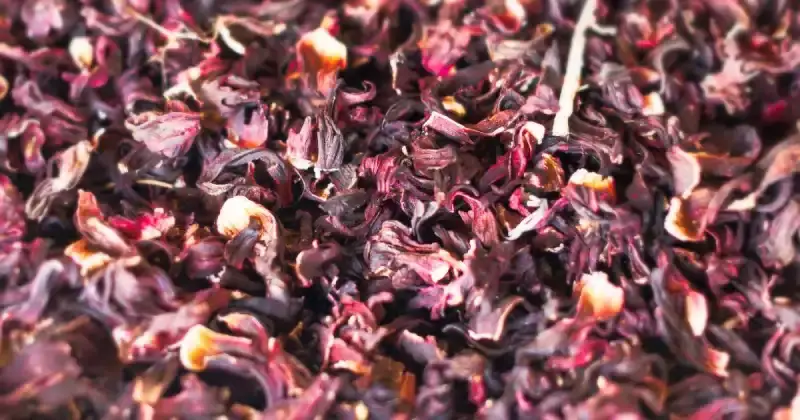
Here’s how you can do it:
Candied Hibiscus Flower Recipe
1. Boiling Water and Sugar Syrup: The first step is to bring equal parts of water and sugar to create a sugar syrup.
2. Dipping Flowers: The flowers are gently dipped once the sugar syrup is ready. The syrup coats the flowers, giving them a beautiful amber color and adding a touch of elegance and visual appeal to the flowers, making them perfect for dessert garnishing.
3. Drying the Flowers: Once the flowers are dipped and cooled, they are left to dry. As the sugar syrup hardens, it acts as an adhesive, holding the flowers in place. The result is candied flowers with a glossy appearance and a sweet, sugary texture.
Once the candied flowers are ready, they can be used as an elegant and unique dessert garnish. The flowers’ beautiful amber color and sweet flavor add a special touch to various sweet treats, enhancing their visual appeal and making them more enticing. 5
It is essential to let the sugar syrup cool down before dipping the flowers to avoid wilting. Use tender flowers. Delicate flowers work best, as they hold up well during the dipping and drying process. Flowers that are too thin or soft might not withstand the coating and may fall apart.
Also, be sure to use only a little sugar when making syrup. If it’s too thick or overly sweet, it can cause the flowers to become too heavy and lose their delicate appearance. Remember, the right balance of sugar ensures the flowers retain their shape and form.
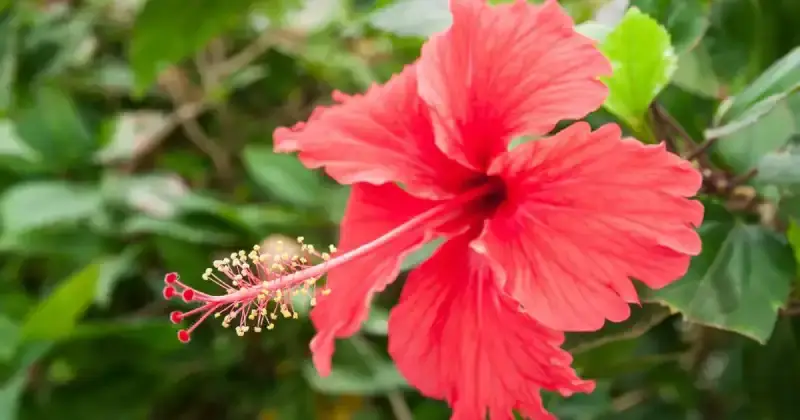
Wild Hibiscus Flowers In Syrup Recipe
1. Harvesting The Fresh Hibiscus Flowers
Once the pretty hibiscus flowers have fully opened, they are carefully hand-picked from the hibiscus plant. The flowers are selected at their peak freshness to ensure the best flavor and appearance. Harvesting hibiscus flowers early in the morning when the temperatures are cooler is best. Flowers tend to retain more moisture and freshness during this time.
2. Deseeding And Quality Check
After harvesting, each hibiscus flower is meticulously deseeded to remove any unwanted parts and ensure only the best parts of the flower are used. Additionally, a thorough quality check is performed to ensure that only perfect and intact flowers are included in the final product.
3. Packing Into Heat Resistant Glass Jars
With great skill and care, the freshly harvested and prepared hibiscus flowers are delicately packed into each jar, arranging them to suit their individual shapes and maintain their beauty.
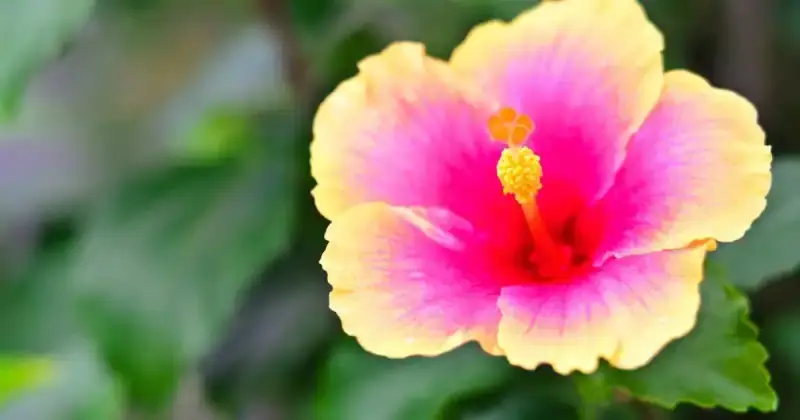
4. Adding Cane Sugar And Water
Once the hibiscus flowers are arranged in the jar, a sweet syrup is created by adding an equal ratio of cane sugar and water. The combination of sugar and water acts as a preserving medium while enhancing the flowers’ natural sweetness.
5. Cooking Inside The Jar
The jars with the hibiscus flowers, sugar, and water are then cooked in a controlled environment until they bubble. This gentle cooking process allows the flowers to infuse their unique flavor and natural floral color directly into the syrup, creating a delightful taste and visual appeal.
6. Vacuum Sealing
After the cooking process, the jars are carefully sealed with a vacuum sealer machine. This step ensures that the hibiscus flowers in syrup are well-preserved and maintain their freshness and quality for an extended period.
Following these steps, you can create your wild hibiscus flowers in syrup, preserving the delicate beauty and distinctive flavor in various culinary creations, cocktails, desserts, and more.
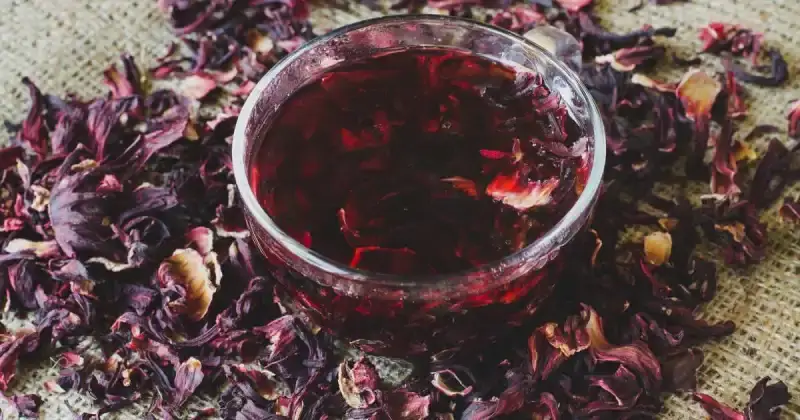
Hibiscus Tea From Petals
To make hibiscus tea from petals, you’ll need fresh hibiscus flowers in full bloom or dried flower petals. If using fresh flowers, separate the petals and thoroughly rinse them. For eight flowers, use four cups of water. Boil the water, add the petals, turn off the heat, and cover tightly.
Steep for 15 to 20 minutes to avoid bitterness, and strain the tea. Optionally, you can enhance the infusion with cinnamon sticks, lemon, or honey. Hibiscus flowers have a lot of vitamin C, making this delicious tea a beneficial addition to your diet. 6
If you prefer a more robust flavor, add more flower petals instead of steeping longer. Remember, the longer you steep your hibiscus, the bitter the taste can be.
Check out this video below, which explains how to use hibiscus in your kitchen, along with some crucial information about the flowers themselves. Remember, hibiscus isn’t just a beautiful aesthetic in your garden but can be used in various dishes to add a fruity and floral tang.
What Are The Benefits Of Eating Hibiscus Flowers
Hibiscus flowers offer numerous health benefits that many may be unaware of. Here are some benefits you can get from consuming hibiscus flowers.
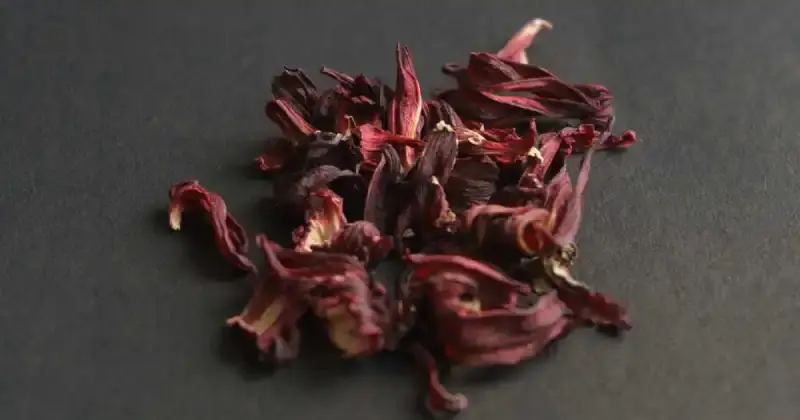
1. May Help with High Blood Pressure: Nutrition scientist Diane McKay found that hibiscus tea may help lower blood pressure, making it beneficial for heart health. However, caution is advised for those using the drug Hydrochlorothiazide for blood pressure management. As always, be sure to consult with your doctor or medical provider before making any dietary changes. 7
Hibiscus tea has natural diuretic properties. Hydrochlorothiazide is also a diuretic medication. When hibiscus tea, another natural diuretic, is consumed with the medication, it may lead to an excessive increase in urine output and dehydration, potentially causing electrolyte imbalances or other complications.
2. Lowering Blood Sugar: Hibiscus tea may assist people with type 2 diabetes in helping to maintain blood sugar levels. But if you’re already taking medication for blood sugar control, be cautious. Again, consult your doctor before consuming hibiscus while on any medication, as this blog post is not intended to replace sound medical advice from a trained professional.
3. Lowering Cholesterol: Hibiscus tea may increase HDL cholesterol (High-Density Lipoprotein cholesterol, often referred to as “good cholesterol”) and may decrease LDL cholesterol (Low-Density Lipoprotein cholesterol, often referred to as “bad cholesterol”) along with triglycerides, which contributes to better heart health. 8
4. Boosting Immunity: The high antioxidant content of hibiscus flowers may help strengthen the immune system, aiding in illness prevention.
5. Weight Management: Hibiscus extract may aid in weight loss and significantly impact body weight.
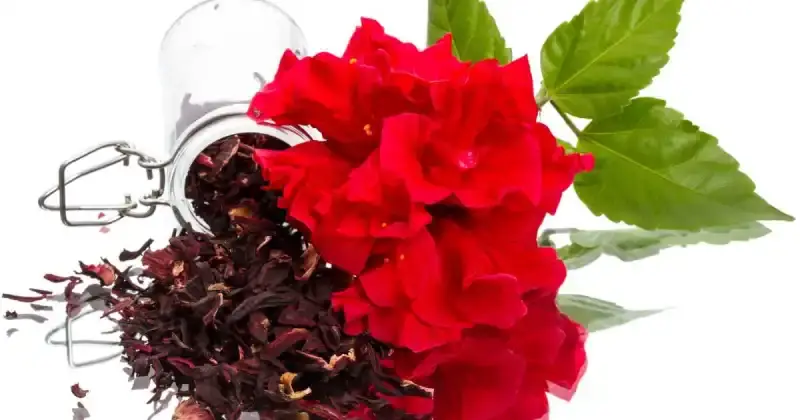
6. Maintaining Kidney Health: Herbal tea from dried flowers has shown nephroprotective benefits in recent studies and can help reduce non-enzymatic markers of renal impairment. Nephroprotective refers to a substance or treatment that can protect the kidneys from damage or prevent kidney injury.
7. Boosting Liver Health: Hibiscus extracts may help reduce toxic liver fat, neutralize free radicals, and improve liver cell function.
8. Addressing Menstrual Problems: Hibiscus has estrogenic properties and may help regulate menstruation, making it beneficial for women with irregular menstrual cycles or cramps.
9. Fighting Bacterial Infections: Hibiscus extracts demonstrate antibacterial qualities and may inhibit bacterial activity, such as E. coli, that causes stomach illnesses. 9
10. Aiding Digestion: Hibiscus tea’s diuretic properties promote urination and may improve overall gastrointestinal health, helping with constipation and digestion.
Is It Safe To Eat And Use Hibiscus Flowers
While hibiscus flowers are generally considered safe and may have a wide range of health benefits, some individuals may experience allergic reactions or adverse effects, especially if on a particular medication.
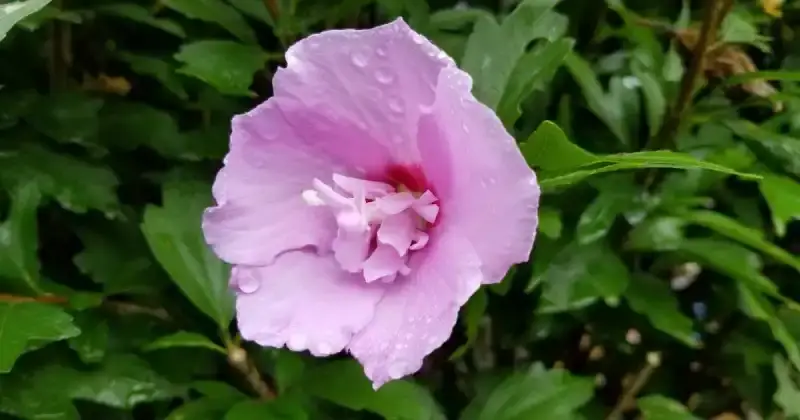
Allergic reactions to hibiscus are rare, but if you have a known allergy to plants in the Malvaceae family, which includes hibiscus, it is best to avoid consuming hibiscus flowers. Consult your doctor first to determine if you are allergic before consuming. 10
Additionally, if you are new to consuming hibiscus, starting with a small amount is advisable to check for any adverse reactions. If you experience symptoms like itching, swelling, rash, or difficulty breathing after consuming hibiscus flowers, discontinue use and seek medical attention immediately. As explained above, referring to your doctor before consuming hibiscus is best.
Conclusion
For backyard gardeners, the hibiscus flower presents a delightful opportunity to beautify your garden and explore its culinary potential. With edible flowers, leaves, and calyces, hibiscus offers a range of possibilities to add unique flavors and colors to your dishes. The possibilities are endless, from refreshing hibiscus tea to delectable salads and desserts adorned with candied hibiscus petals. Let your taste buds guide you as you explore these edible blooms’ versatility.
Have you tried incorporating hibiscus flowers into your favorite drinks and dishes? We’d love to know how you’ve used this versatile and tasty flower. Take a moment and drop us a line in the comment section below!
SOURCES
- National Library Of Medicine, National Center For Biotechnology Information – Physiological Effects And Human Health Benefits Of Hibiscus Sabdariffa: A Review Of Clinical Trials
- University Of Florida, Gardening Solutions – Hibiscus
- FGCU Food Forest – Edible Hibiscus
- National Library Of Medicine, National Center For Biotechnology Information – Functional Properties Of Roselle (Hibiscus Sabdariffa L.) Seed And Its Application As Bakery Product
- University Of Minnesota, Extension – Hibiscus
- Wikipedia – Hibiscus
- United States Department Of Agriculture, Agricultural Research Service – Study Shows Consuming Hibiscus Tea Lowers Blood Pressure
- Penn State University – Analyses For Flavonoid Aglycones In Fresh And Preserved Hibiscus Flowers
- ResearchGate – Nutritional And Health Importance Of Hibiscus Sabdariffa: A Review And Indication For Research Needs
- University Of Minnesota, Extension – Edible Flowers


